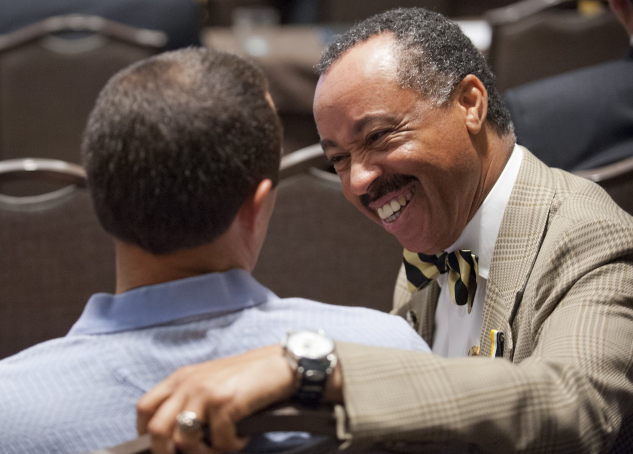Structure and Governance

The work of the alumni club begins once its registration is received. While there may be a desire to "jump in" and start planning events it is imperative that the operational structure of the club be established.
The structure of an alumni club consists of two components – an operational model (i.e. number of events expected in a year) and club leadership (e.g. officers, executive/planning committee, etc.). Without these components, a club may find ongoing operations difficult.
Operational Model
Effectively, an alumni club can hold events as frequently as it chooses, so long as at least one event is held each fiscal/academic year. Regardless of the number of events, or how frequently events occur, though, it is vital that the schedule of events be consistent. Avoid “pop-up” events, last minute notification, and random scheduling.
In general, there are three models that clubs have used successfully.
- Annual – One event per fiscal/academic year. Successful examples of this model tend to center around another annual event (e.g. holiday, large local festival/celebration, etc.).
- PROS – Fairly easy to plan with plenty of planning time; Consistent timing each year (e.g. first Saturday in December) makes it easy for brothers to plan to attend; Becomes a highlight event.
- CONS – Only one event, so there are limitations put on the depth of the connections made at the event; May not fit to the schedule of all alumni.; Limitations on event type (i.e. family/guests invited, community-focused, social, brothers only, etc.).
- Bi-annual – Two events per fiscal/academic year (i.e. one event in Summer/Fall and a second event in Winter/Spring). Successful examples of this model also tend to piggyback on larger community events, but success is also correlated to consistency on the calendar.
- PROS – Planning two events is not burdensome and, generally, offers plenty of planning time; Consistent timing of each event (e.g. third weekend of September and second weekend of April) makes it easy for brothers to plan to attend; Allows for a broader mix of event types.
- CONS – Twice the planning; May not fit to the schedule of all alumni; Limitations on event-type (i.e. family/guests invited, community-focused, social, brothers only, etc.).
- Quarterly – Four events per fiscal/academic year (i.e. Q1=July-September; Q2=October-December; Q3=January-March; Q4=April-June).
- PROS – Multiple event types can be planned (e.g. family, community, social, professional); Allows alumni flexibility in their calendar (i.e. which event(s) fit best); Consistent scheduling makes it easier for brothers to plan to attend;
- CONS – Four events can require significant planning, depending on the event; Leadership burn out.
Another aspect of a club’s operations addresses the time between events, regardless of the number of events. If clubs are about relationship building and making connections, then it is important that an alumni club offer a means for that to continue outside of events. Numerous clubs use social media platforms to share information about events and these platforms also serve as opportunities for individual alumni to share news and to continue to connect with other alumni in the area.
Alumni Club Leadership
The Law of Sigma Nu Fraternity, Inc., in Article Eight, Section 8.3, states:
“An Alumni Club may perform those services and functions that are consistent with the powers, duties and purposes of an Alumni Chapter, and with The LAW and welfare of the Fraternity, except that no Alumni Club shall be accorded representation at the Grand Chapter.”
In other words, the leadership structure of an alumni club can be as extensive as the club desires. That said, more than one person is needed to effectively plan and manage club operations. At minimum, each alumni club should have more than one person at the helm. What form that leadership takes is up to the club itself:
- Positional Titles (e.g. President, Vice President, Secretary)
- Executive or Planning Committee
The purpose of club leadership including more than one person ensures continuity of club operations if an individual steps away from participating in the club. How the club selects its leadership is to be determined by the club itself.
What’s Next
It is one thing to understand the operational basics of an alumni club, but it is quite another to do it. Alumni brothers have a lot going on in their daily lives, so it is important that the club is not burdensome to club leaders or participating brothers. The following guidelines have been provided to assist in the development of various operational components of the alumni club.
Alumni Club Guidelines for Operational Excellence